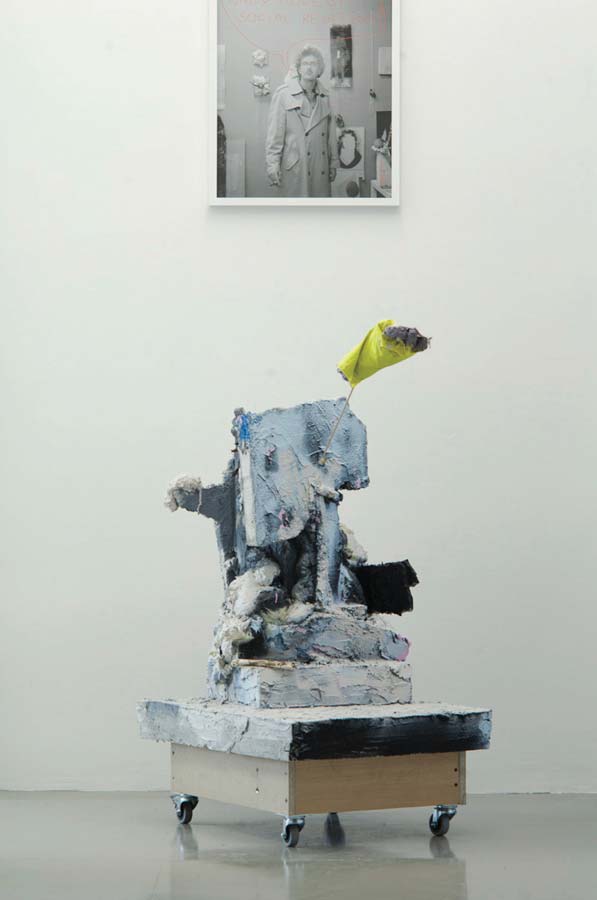The dereliction of things—
Oft times when I imagine my art work speaking, these derelict things, the sound that erupts from the orifices bored into their surface is BLAAAH. A sound that occupies to my mind a very peculiar relation to language: not quite in language, since BLAAAH does not only not make sense, but is a declaration of its refusal. Yet, it is not outside of language either. BLAAAH is neither a grunt nor a cry and has nothing of the whine about it. Closer perhaps to a gasp, but more nonchalant, more indifferent. Its silliness is refined. A non-word that enunciates language’s monotonous reign over things. It slips like a blurt from the speaking subject as if a symptom of language’s deformity. BLAAAH is not really a belch, lacking the gut to give it depth, and is more satisfying than a hiccup. BLAAAH unfurls across a surface. It is a noise that is as pleasurable as monotonous—the pleasure of monotony. BLAAAH is the shape and form of an obstacle, that makes meaning trip, fall into indistinction. Something that is BLAAAH is impoverished. It is a sound that erupts from an essential poverty. If it is a declaration then it announces the impoverishment of language in the face of the dereliction of things. Things are derelict when the meanings that mold them no longer grip, a sign that a definition has begun to slide. BLAAAH erupts from the crack, the fault line, that separates meaning from itself. It fills this gap with its own indifference. For BLAAAH is a refinement of the yawn and makes of the void a weapon, that it hurls at language from within. It is perhaps the single sound adequate to the increasing inanity of our world, whose infantilization has to be met with the stupidity of a singularly adult sound. Poised between allure and disgust, BLAAAH is the senseless language of things. It scores their dereliction.
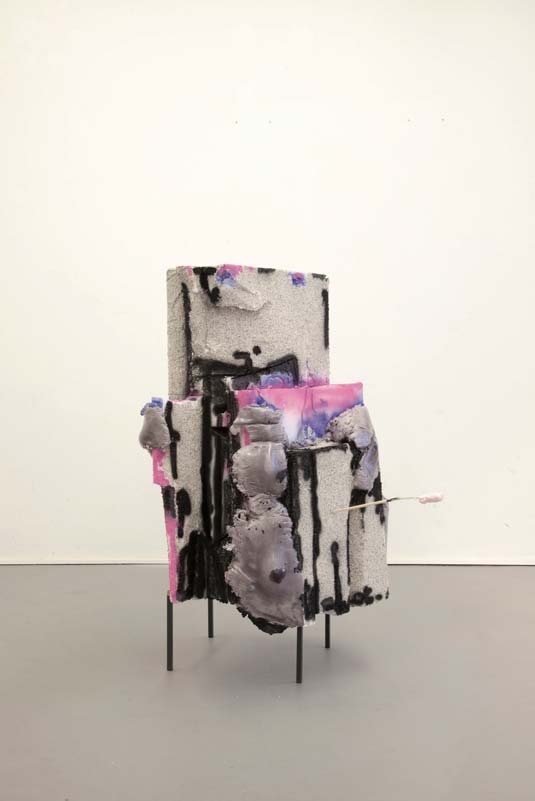
A Paradox of Place—
To occupy a place entails that one is not One with the place that one occupies. This is as true for things as it is for subjects. To be placed is then to be in and out of place. To occupy a position, a place, entails then a displacement. What is displaced in being placed is not the place itself—since one could not then be placed at all. What is displaced is the not—the void—that one occupies. The void names not the place, but that which is displaced in the place when occupied. To be placed is to be the not in place. Consequently, there is no such thing as one place. Place is always two, split, riven. The difference between being a subject and a thing is that the subject has to assume, take upon itself, the fact that it is a not in place. The assumption of this paradox has implications for an, but let me simply assert, my art practice. Since art is more a matter of placing than of making once art abandons making as decisive to what it means to “make” art and to be an artist. Or put differently, one does not have to make something, but rather the place for it. To make a place for that which is not not art, is the decisive and, in my view, irreversible step of the Readymade. The complexities involved entail navigating a conundrum that is silly and serious between placing something, always an idea even if it is dumb as shit, mute like bone, and the implications that this placing has on the one who places, namely the artist. To make use of this void either by filling it, as one stuffs a hole full of debris, or letting it circulate like a termite hollowing out a trunk.
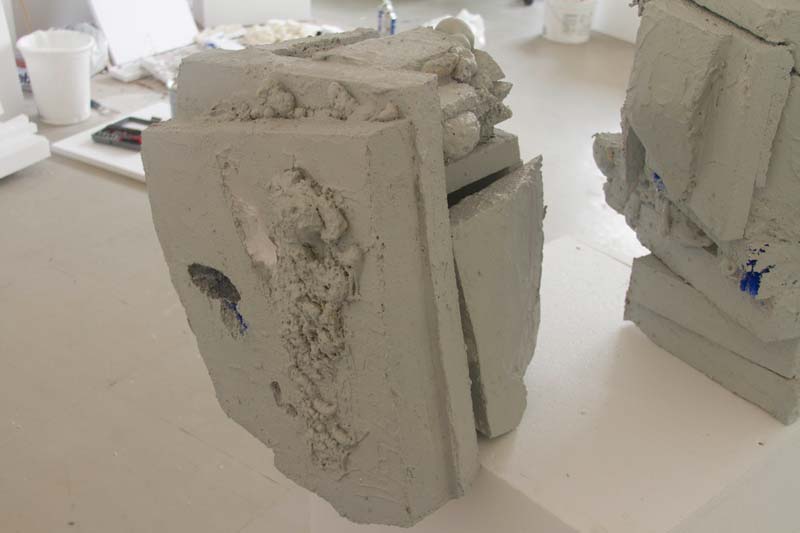
“O”—
A friend of mine asked me, which of the following four things is least like the other and why: selves, shelves, shovels, elves. My response ran as follows: Shovels are least like selves, elves or shelves. This is not simply because of the “o”—that rogue letter that is also the mark of a certain lack, a zero, a point of subtraction that sets this word apart. The shovel is an instrument designed for digging, which is to say making a hole. This is why its inclusion of the “o” is appropriate. It includes its little hole. But shovels are also used to fill holes, plugging up the gap, the void, which is always why this little addition of the “o” sets the shovel apart, in this case, by making it whole. The shovel like selves, elves and shelves is a little helper. But it is not a support structure, unless it is being used to prop something up, some other body perhaps or one’s own, in advance of a broken arm. But then it would be something suspended, hung from the ceiling, neither simply a borer or a filler of holes, but an unmaker of wholes, that thing Duchamp called art.
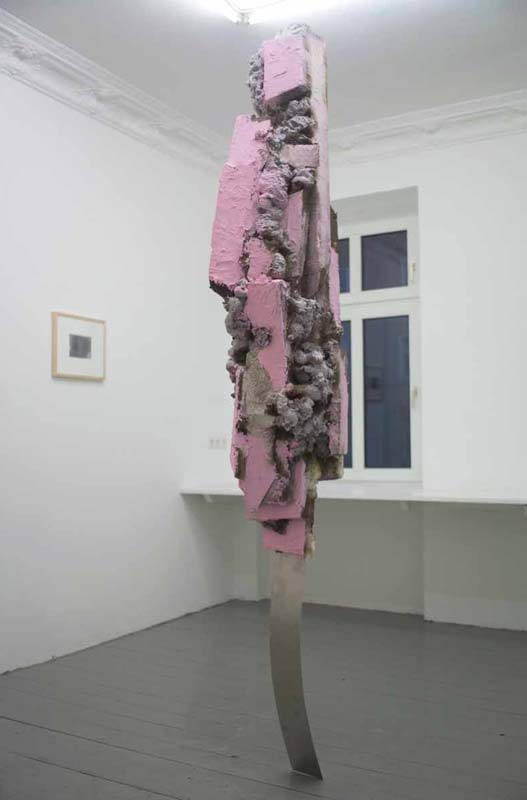
The Materialist’s Creed—
One speaks of knowing one’s place. And there is little doubt that getting by in this world, whether one is simply coping or thriving, requires a sense for the position one occupies. This need not be something that one is conscious of. It is more important that one can be made conscious of it. Condescension and other forms of knuckle rapping serve as reminders of place and degree, of order, in short, and one’s place in it. To escape definition, to slip one’s place, is always a bit dangerous and it is human all too human to be reminded, and susceptible to being reminded, that one is after-all a piece of shit. And the human being is never short on means of reducing one’s place to a nullity. A bullet in the head after-all puts an end to the discussion. One’s value is not what one has (despite the humanist’s cries) but something one is bequeathed. It requires authorization. It can be given and taken away. Each mark of distinction is haunted by a shadow. And the whole edifice is maintained as long as one believes in place and the authorities that mark its degrees. Value implies devaluation. To obliterate degree is to assume the nullity that the bullet wound makes in the skull. The hole in the skull is a site of exchange where the least and highest meet, however, terminally. Any lever can be used as a truncheon, but a truncheon can be used as lever. The assumption of this nullity is the materialist’s creed. One’s nullity is that which cannot be taken.
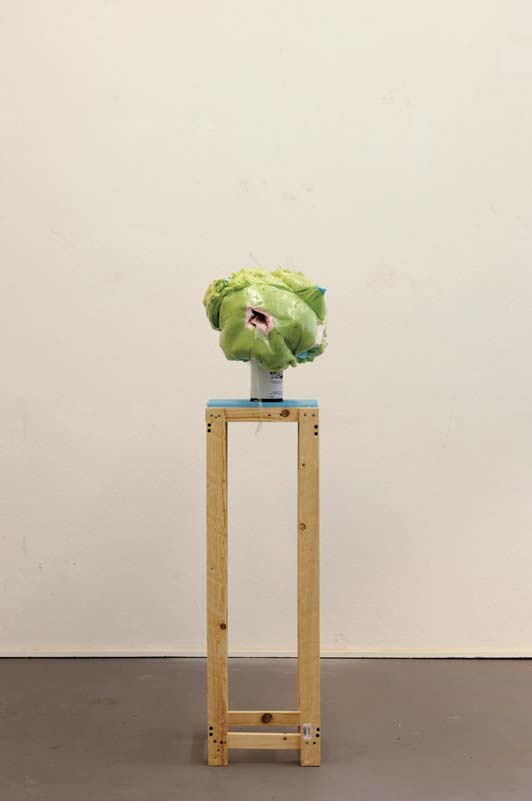
Self-help—
Art is a kind of self-help. It helps its self to itself like a dish that it must chew up and digest. It consumes itself: a beautiful tautology, a glorious cannibal that can live from gnawing on its own flesh. A part, a jaw, that can eat away the whole. To eat the whole is to eat a hole, like a corrosive that undoes the chemical bonds that cleave matter to matter. Therein lie all its joy and its cruelty. Yet, as art digests itself it encounters that which it cannot digest. Tooth hits bone. We get a sense for the encounter when listening attentively to the dull sound of tooth on tooth echoing in the cavity of the mouth. With bone, art encounters that outside that is inside itself, that lifeless expressionless thing whose bumps and crevices it must explore and trace. This is the indigestible, the left over, the discarded. Art may not be able to live from but it lives off this remainder like a mold expanding across the surface of an organic compound that provides us an image of the very form of decomposition.
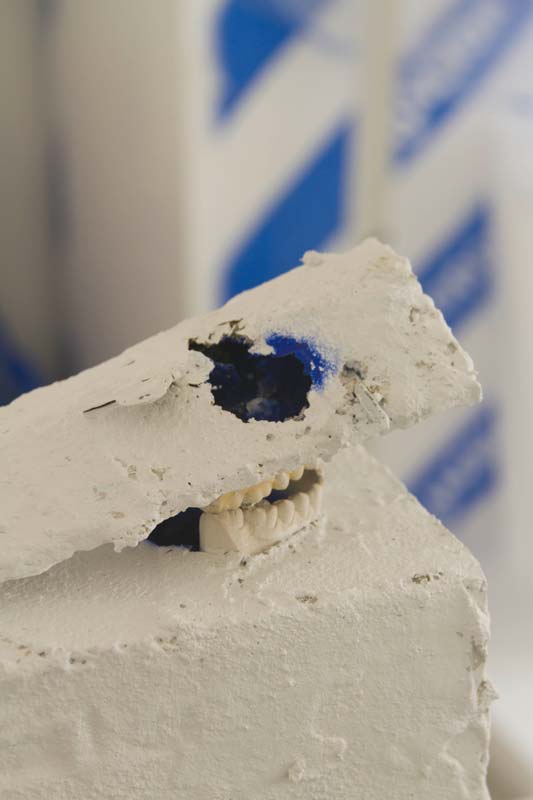
The knitting of bone—
Rousseau imagined that the bones of the pre-civilized human being, what he called the noble savage, would heal of their own accord when broken. They would set themselves a straight, knitting without need of external prop or technical ploy. We would be foolish to laugh at such a fundamental fantasy that is in-set into the Western psyche like worm larvae. The flipside of Rousseau’s natural optimism is his acute lucidity, his severe pessimism when it comes to the civilized animal. This animal is born broken, in pieces, and has to be assembled like a jig-saw puzzle, but, of course, the key pieces are missing. To be put together well means that enough pieces can be bound to give a semblance of integrity, the integrity of an animal that can hold itself upright without immediately careening to the floor. Such an animal needs its splints, its plaster casts, its cartilage canes, its aluminum crutch.
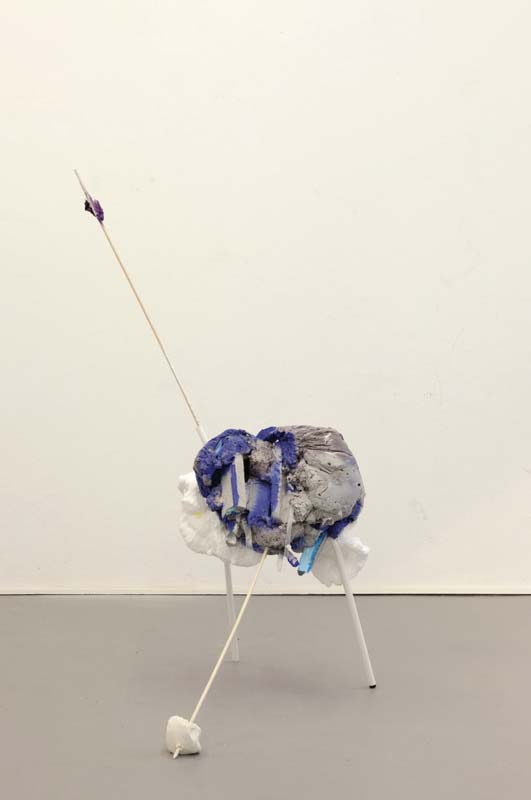
Holing up—
English permits this strange idiomatic formula. What does it mean to hole up? We speak of holing up somewhere, some place. To hole up is to barricade oneself in, to ready oneself for a long winter for example, to make due, to get by, to wait the thing out. It is a matter of weathering the storm. It is a matter of burrowing. To hole up is to occupy a hole, to attend to the indefinite task of sealing up the gaps that let in the inclement. That which comes to occupy the site of the hole maintains itself, marks out the perimeter by filling the cracks that would dissipate it. Art is a kind of holing up.
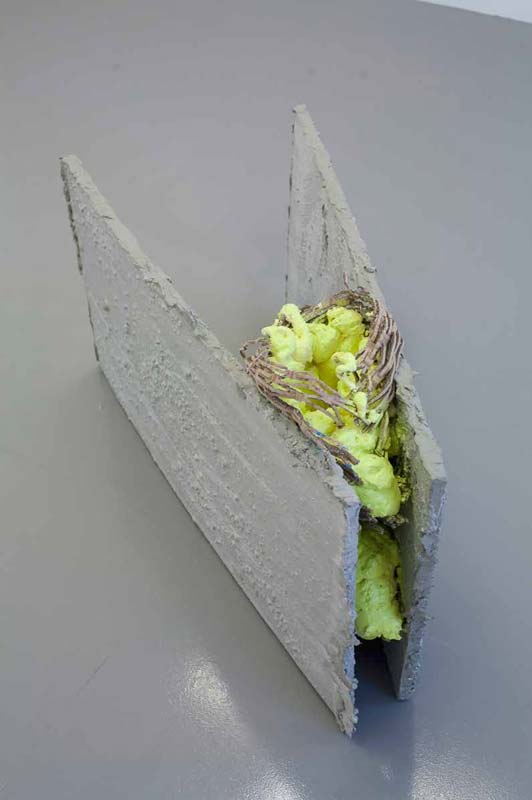
Teething—
The first word is not spoken but impressed on the soft tissue of the gum by an incumbent tooth. Not exactly a bite, but not not a bite. It is a non-bite that breaks the flesh and gives the infant human being a taste for its own blood. Language retains this character of biting, of being able to cut into flesh, to wound, and the one who speaks always has a taste for blood.
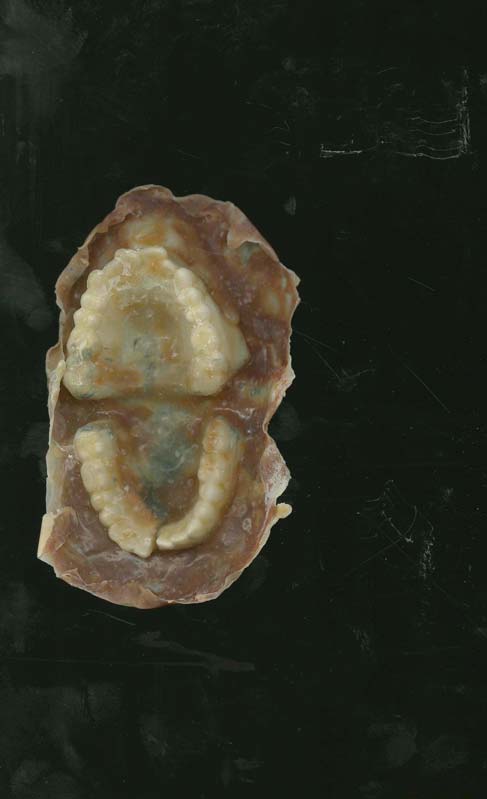
Mold—
The French word for a mold is moulé. Moulé, however, also designates the sea creature we term a mussel. This slippage in reference, which Marcel Broodthaers exploited to its full extent, is particularly apt, since the mussel’s shell provides support and shape, the crucial element of form, to its fleshy substance. When shorn of barnacle and beard, the mussel with its shell is an elegant creature, and it produces a luxurious interior through the continuous excretion of nacre (mother of pearl). The shell lends form to the amorphous bit of flesh, providing it with the structure that enables it to assume its place. If picked by a gull and dropped from a height sufficient to shatter its shell, its unseemly character is undeniable. Exposed and helpless, it makes for easy prey. The English word mold also serves to designate two different things: the form or container that defines the limits of the shape of something and a kind of fungus whose growth is composed of filaments that combine to make a web-like structure, called hyphae. The shape of a given mold, its differentiated structure, allows one to classify different types. If the French notion leads one to emphasize the opposition between interiority and exteriority, form and content, and perhaps even matter and idea, the English emphasizes the manner in which a surface is covered. The growth of mold assumes of course the shape of the thing on which it grows since it is feeding on the substance. Mold can only be made through the sacrifice of the thing whose shape is being molded. It marks and differentiates itself from the surface through its expansion. Yet, its progress marks the decomposition of thing and its form becomes indiscernible from the deformations that it both marks and engenders.
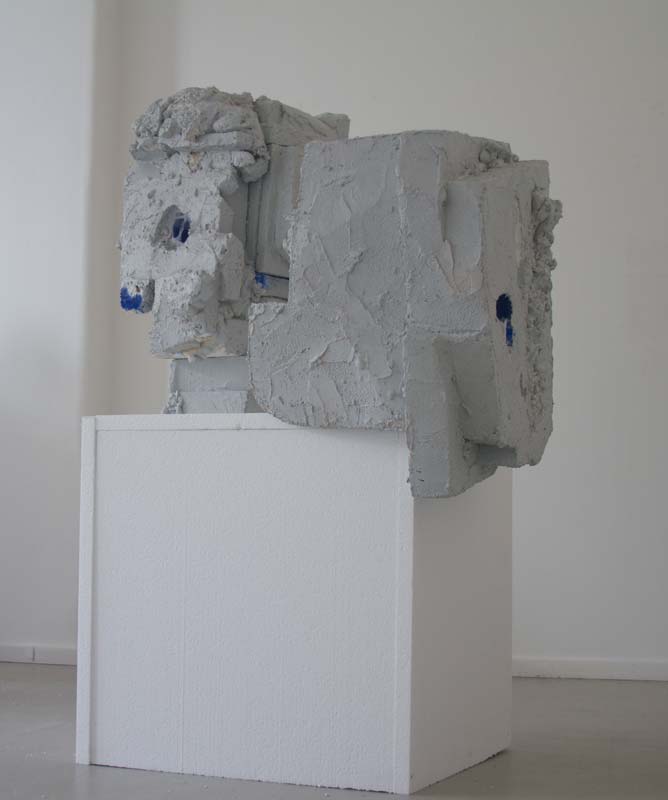
Seelenschlieferl—
Karl Krauss coined this term for the psychoanalyst—a profession for which he famously had little patience or respect. However, the term seems more appropriate as a description of the operation essential to my art practice. As an artist, I am a Seelenschlieferl. A Seelenschlieferl is strictly speaking untranslatable. Thomas Szasz proposes for example “soul-sapper” which is not bad, but fails to grasp the operation which is not simply a matter of sapping strength or drawing power from another, but displacing that power, like a servant that displaces its master. Schlieferl is an Austrian idiom that comes from schliefen (schlüpfen), referring to the activity of an animal, such as a Dachl, that sneaks or slips into the hole of another in order to unseat it. In Viennese slang, the term referred to a kind of ass kisser, or brownnoser, a sycophant whose ambition takes the form of obsequy. A Seelenschlieferl would be an animal that burrows into the soul in order to up-set it, to unseat it. My art is a matter of cosying up to the identity of the things involved, burrowing into their signification in order to hollow them out, forcing them to become the surrogates of my wayward imagination.
